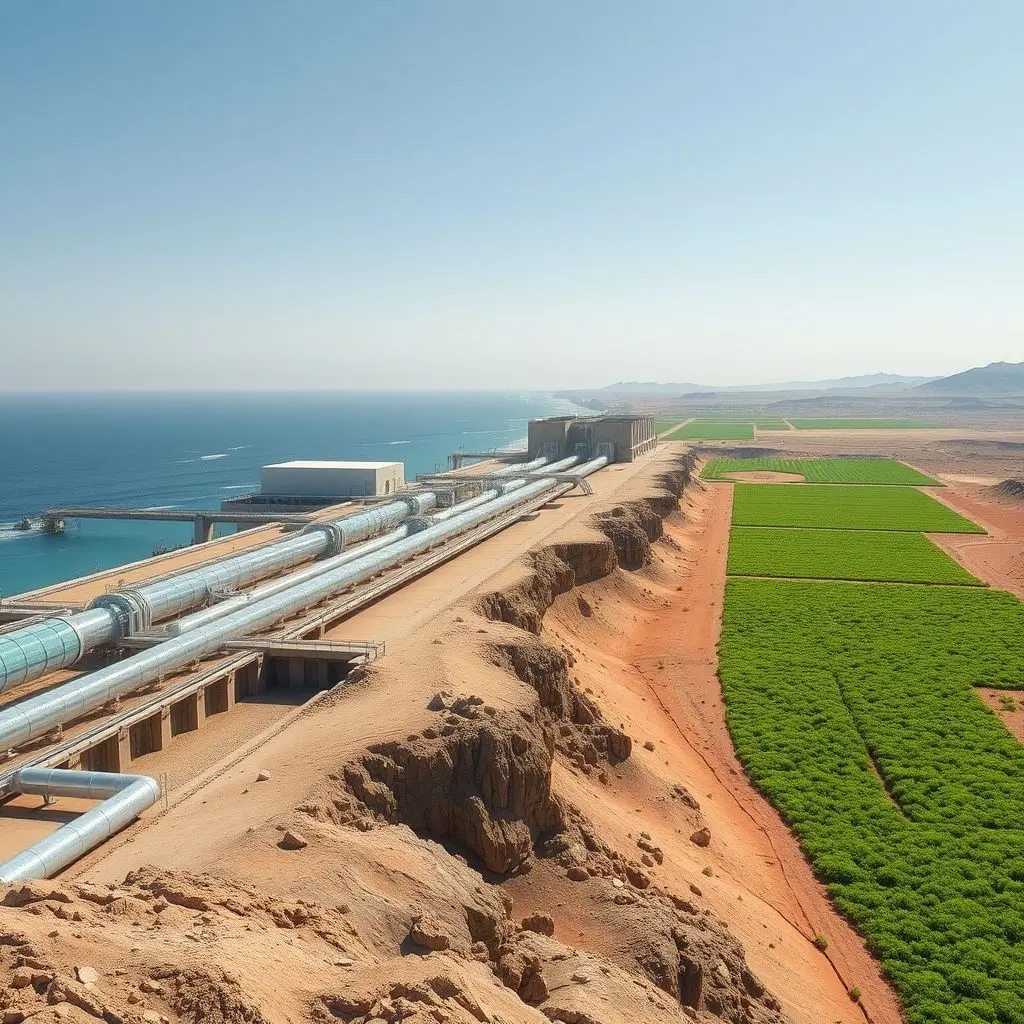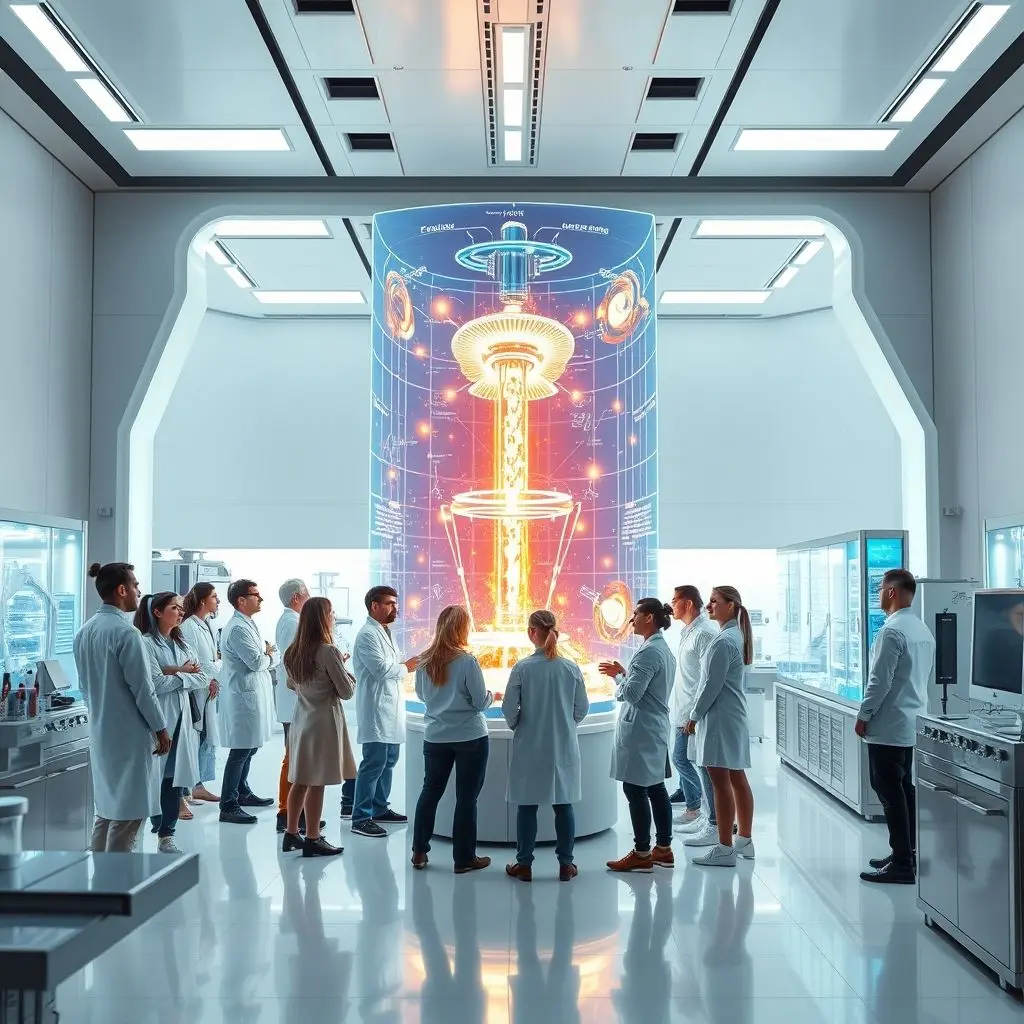Picture this: you roll out of bed tomorrow, grab your coffee, and glance at the news. The headline? Global Fusion Power Grid Activated. Sounds like a sci-fi movie, right? But what if it wasn’t? What if, by some incredible leap, we suddenly had access to clean, virtually limitless energy from nuclear fusion? Your electricity bill might just become a quaint historical artifact, and that nagging ‘energy crisis’ anxiety? Poof! Gone like a weird dream.
This isn’t just about cheaper toaster strudels; it’s about fundamentally rewriting our relationship with energy and, by extension, our planet and future. We’d be facing a whole new set of (arguably much better) challenges and opportunities. If that thought alone has sparked a little something in your brain, you’re in the right place.
In fact, we got so jazzed about this idea, we whipped up a quick visual take on it. Think of it as an espresso shot for your imagination – much easier than, you know, trying to build a miniature sun in your backyard!
Table of Contents
First Off, What Exactly Is This Fusion Magic?
Before we dive into the utopian (or just radically different) future, let’s get a handle on what nuclear fusion actually is. Unlike fission, which powers current nuclear plants by splitting heavy atoms (like uranium) and creating long-lived radioactive waste, fusion does the opposite. It mimics the process that powers our Sun and other stars!
In essence, fusion involves:
- Taking light atomic nuclei: Primarily isotopes of hydrogen called deuterium (found abundantly in seawater) and tritium (which can be bred from lithium, another common element).
- Forcing them together: Under conditions of immense temperature (hundreds of millions of degrees Celsius – hotter than the Sun’s core!) and pressure.
- Creating a heavier nucleus (helium): And in this process, a tiny amount of mass is converted into a huge amount of energy, as per Einstein’s famous E=mc².
The beauty of it? The primary byproduct is helium, an inert, non-toxic gas. No greenhouse gas emissions, no risk of meltdown like traditional nuclear reactors, and significantly less problematic radioactive waste (mostly from activating reactor components, which would be shorter-lived).

Sounds amazing, right? The catch has always been achieving and sustaining those extreme conditions in a controlled, energy-positive way. That’s the multi-billion dollar, multi-decade challenge scientists are still tackling. But for this thought experiment, let’s assume they cracked it overnight.
The Morning After: Immediate Transformations
If we woke up to a fusion-powered world, the initial shockwaves would be felt everywhere, almost instantly.
1. Electricity Bills: A Relic of the Past?
Imagine energy becoming so abundant and cheap it’s barely metered. This isn’t just a consumer win; it would lift millions out of energy poverty, enabling access to lighting, heating, cooling, and modern appliances for all. Industries with high energy costs would see their operational expenses plummet.
2. Transportation: Clean, Quiet, and Boundless
Electric vehicles (EVs) would become the undisputed norm, powered by an endless stream of clean electricity. For heavy transport like shipping and aviation, fusion could power the production of green hydrogen or advanced synthetic fuels at scale, decarbonizing sectors that are currently hard to abate. Your commute? Silent, clean, and guilt-free.
3. The ‘Energy Crisis’ Narrative: Finito!
Geopolitical tensions over fossil fuel reserves would largely evaporate. Nations would gain energy independence, reducing international conflicts driven by resource scarcity. The global focus would shift from managing dwindling supplies to distributing and utilizing abundance wisely.

Rippling Outwards: Reshaping Society and the Planet
The long-term consequences of fusion power would be even more profound, touching every facet of human civilization and our environment.
1. Solving Water Scarcity
Desalinating seawater is an energy-intensive process. With ultra-cheap fusion power, we could build massive desalination plants, providing abundant fresh water to arid regions, revolutionizing agriculture, and ending water wars before they begin.

2. A Manufacturing and Industrial Renaissance
Energy-hungry industries like aluminum smelting, steel production, and even advanced manufacturing (think vertical farms on a city-wide scale, or direct air capture of CO2) would become economically viable and environmentally friendly. This could unleash a new wave of innovation in materials science and production methods.
3. Turning the Tide on Climate Change
This is perhaps the most craved-for benefit. Fusion power offers a direct path to decarbonizing the global electricity grid. This, combined with its ability to power carbon capture technologies, could not only halt but potentially reverse the buildup of greenhouse gases in the atmosphere. We could genuinely start healing the planet.
4. Space: The Truly Final Frontier
Want to talk about bold ambitions? Fusion rockets could drastically reduce travel times within our solar system, making missions to Mars, the asteroid belt, or even the outer planets far more feasible. Powering permanent bases on the Moon or Mars would no longer be an energy-constrained dream.
The New Set of Puzzles: Managing an Age of Abundance
As the voiceover in that short video hinted, we’d be solving *totally different* problems. An energy utopia isn’t without its own complex challenges:
- Economic Restructuring: What happens to the colossal fossil fuel industry and its workforce? Managing this transition fairly would be a monumental task.
- Waste Heat: While cleaner, fusion reactors would still produce waste heat. Managing this on a global scale, especially if energy consumption rises dramatically, would require careful planning and innovative cooling solutions.
- Material Demands & Infrastructure: Building and maintaining a global network of fusion reactors would require vast quantities of specialized materials (like superconductors, lithium, and advanced alloys). Our global power grids would also need significant upgrades.
- Governance and Equity: Who controls this transformative technology? How do we ensure its benefits are shared equitably across all nations and peoples, preventing a new form of “energy divide”?
- The Human Question: With basic needs like energy and water potentially secured for all, what new pursuits, challenges, and purposes would drive humanity? This delves into philosophical territory but is a crucial aspect of such a profound societal shift.

Is This All Just a Pipe Dream? A Reality Check
Okay, let’s take a breath. Waking up *tomorrow* to full-scale fusion power is, as we said, a thought experiment. In reality, the path to commercial fusion is incredibly complex. International projects like ITER in France are making strides, and private companies are attracting significant investment, with some promising breakthroughs in magnet technology and plasma physics.
Disclaimer: While the potential benefits discussed are based on the theoretical capabilities of fusion power, achieving commercially viable fusion energy is still considered to be decades away by most mainstream scientific consensus. Significant scientific and engineering challenges remain.
However, the progress is tangible, and the “what if” isn’t just idle fancy; it’s the driving force behind billions in research funding and the dedication of thousands of brilliant minds. The promise is so immense that the pursuit, however long, is deemed worthwhile.
Conclusion: Energizing Our Future
The prospect of fusion power today is a tantalizing glimpse into a radically optimistic future. It’s a world where energy, the lifeblood of civilization, ceases to be a source of conflict and pollution, and instead becomes an enabler of unprecedented progress, environmental restoration, and human potential.
While we might not flip the fusion switch tomorrow morning, imagining such a reality helps us appreciate the stakes and the incredible drive to turn this stellar ambition into terrestrial reality. It’s about more than just keeping the lights on; it’s about powering a brighter, cleaner, and more equitable world for generations to come. And that’s a thought with enough energy to change everything.

Frequently Asked Questions (FAQs) About Fusion Power
Q1: What is fusion power in simple terms?
A: Fusion power is the energy produced when small atomic nuclei (like types of hydrogen) are combined, or ‘fused,’ together under extreme heat and pressure, similar to how the Sun makes energy. The process releases a massive amount of energy, primarily producing helium as a byproduct.
Q2: Is fusion power dangerous like current nuclear (fission) power?
A: Fusion is considered inherently safer than fission. There’s no risk of a runaway chain reaction or meltdown; if the precise conditions are lost, the fusion reaction simply stops. It also doesn’t produce long-lived, high-level radioactive waste like fission plants. The main radioactive material would be the reactor components themselves becoming activated, but this waste would be less hazardous and have a shorter decay time.
Q3: How would fusion power affect climate change?
A: Dramatically and positively. Fusion power plants would not emit greenhouse gases during operation. Widespread adoption could lead to a massive reduction in carbon emissions from the energy sector, helping to combat climate change and improve air quality.
Q4: When can we realistically expect fusion power?
A: This is the big question! While significant progress is being made, most experts predict that commercial fusion power plants are still likely several decades away – possibly in the 2050s or later. However, timelines are subject to breakthroughs and investment levels. Some private companies are aiming for earlier demonstration plants.
Q5: What are the main fuels for fusion?
A: The most promising fuel cycle for near-term fusion reactors uses two isotopes of hydrogen: deuterium and tritium. Deuterium can be extracted abundantly from seawater. Tritium is radioactive with a short half-life and not found in nature in large quantities, but it can be ‘bred’ from lithium (a common element) within the fusion reactor itself.


